Medication Dry Eye Checker
Check if your medications may be causing dry eyes. Enter medications (e.g., "Zoloft, metoprolol") and discover risks + relief strategies.
Why Your Medications Are Making Your Eyes Feel Like Sandpaper
You’re taking your pills exactly as prescribed-blood pressure medicine, antidepressants, allergy pills-but your eyes are burning, red, and constantly dry. You blink and it feels like there’s grit under your eyelids. You can’t read for more than a few minutes without squinting. You’ve tried over-the-counter drops, but they only help for a few minutes. You’re not imagining it. Medication-induced dry eye is real, common, and often overlooked.
Up to 30% of all dry eye cases come from the drugs you take daily. For people over 65, that number jumps to 40%. It’s not just aging. It’s the mix of prescriptions piling up: antihistamines, beta-blockers, diuretics, antidepressants, even acne meds like isotretinoin. These drugs don’t just target your symptoms-they mess with your tear system. They shut down tear production, clog the oil glands that keep tears from evaporating, or dry you out from the inside.
Glaucoma eye drops are a big one. About half the people using them say their eyes burn and feel dry. Why? Because most contain a preservative called benzalkonium chloride (BAK). It kills bacteria, sure-but it also kills the surface cells of your eye. Switching to preservative-free versions cuts those symptoms in half.
What Medications Cause Dry Eyes? (And What to Ask Your Doctor)
Not all dry eye is the same. The cause depends on the drug. Here’s what’s most likely to be behind your discomfort:
- Antihistamines (Benadryl, Claritin, Zyrtec): These block the signals that tell your tear glands to make tears. You get relief from sneezing-but your eyes pay the price.
- Antidepressants (Zoloft, Prozac, amitriptyline): These affect neurotransmitters that control tear production. People on SSRIs and tricyclics report dry eyes as one of their top complaints.
- Blood pressure meds (metoprolol, atenolol, hydrochlorothiazide): Beta-blockers reduce tear flow. Diuretics like Lasix make you pee out fluid-and that includes the moisture your eyes need.
- Acne treatments (isotretinoin/Accutane): This drug shrinks oil glands all over your body, including the ones in your eyelids. Without those oils, tears evaporate fast. Some people never fully recover.
- Glaucoma drops (latanoprost, timolol, dorzolamide): As mentioned, BAK preservatives are the main culprit. Even if the active ingredient is fine, the preservative is damaging your eye surface.
- Newer drugs (immune checkpoint inhibitors, DPP-4 inhibitors, EGFR inhibitors): These cancer and diabetes drugs are now being linked to dry eye through direct damage to tear glands.
Don’t stop your meds on your own. But do ask your doctor: "Is there an alternative with fewer eye side effects?" For some, switching from a BAK-containing glaucoma drop to a preservative-free version makes all the difference. For others, lowering the dose of an antidepressant by 10-20% can reduce symptoms without losing mental health benefits.
Lubrication That Actually Works (Forget the Cheap Drops)
Not all artificial tears are created equal. Most drugstore brands contain preservatives to keep them sterile after opening. But if you’re using them more than 4 times a day-which you likely are-those preservatives add up. They irritate your eyes more than they help.
The gold standard? Preservative-free artificial tears. These come in single-use vials. You open one, use it, toss it. No chemicals. No buildup. Ophthalmologists recommend using these 4-6 times a day. For people on glaucoma drops, applying preservative-free tears 15 minutes before and after their eye drops improves symptoms by 78%.
Here’s how to use them right:
- Tilt your head back slightly.
- Pull your lower eyelid down gently to make a little pocket.
- Hold the dropper above your eye-don’t touch your eye or eyelid.
- Squeeze one drop in. Close your eye for 10 seconds.
Touching the dropper to your eye contaminates it. And if you’re using a multi-dose bottle, you risk infection. Single-dose vials cost more, but they’re safer and more effective for daily use.
If over-the-counter drops aren’t enough, prescription options exist:
- Restasis (cyclosporine): Boosts natural tear production. Takes 3-6 months to work, but 15-20% improvement is typical.
- Xiidra (lifitegrast): Reduces inflammation linked to dry eye. Shows 30% symptom improvement in clinical trials.
- Cequa: A newer cyclosporine formula with nanomicellar tech. Absorbs better. Works faster.
These aren’t quick fixes. But for people who’ve tried everything else, they’re game-changers.

Warm Compresses and Lid Massage: The Forgotten Secret
Your eyelids have tiny oil glands called meibomian glands. They lay down a thin film on top of your tears to keep them from drying out. When those glands get clogged-common with isotretinoin, aging, or long screen use-your tears evaporate too fast.
Warm compresses fix this. Heat melts the hardened oil. Massage pushes it out.
Do this twice a day:
- Wet a clean washcloth with warm (not hot) water. Wring it out.
- Place it over your closed eyes for 10-15 minutes. Re-warm as needed.
- Afterward, gently massage your eyelids. Use your fingertip to roll from the inner corner to the outer corner of each lid, pressing lightly.
Studies show this improves gland function in 65% of people with medication-related dry eye. It’s cheap, safe, and works better than most drops for people with oily tear film issues.
Lifestyle Tweaks That Cut Dry Eye Symptoms in Half
Medications are the trigger. But your environment and habits turn the dial up or down.
Use a humidifier. Dry air sucks moisture from your eyes. Keeping indoor humidity between 40-60% reduces tear evaporation by 25%. Especially important in winter or in air-conditioned offices.
Follow the 20-20-20 rule. Every 20 minutes, look at something 20 feet away for 20 seconds. This gives your eyes a break from staring. Reduces digital strain by 35%-critical if you’re on antidepressants or antihistamines that already reduce blinking.
Take omega-3s. 1,000-2,000 mg of EPA and DHA daily improves tear stability in 60% of users within 3 months. Fish oil is best. Flaxseed doesn’t work as well. This helps if your meds are dehydrating you.
Avoid direct airflow. Don’t sit with a fan, car vent, or AC blowing straight at your face. Air moving faster than 0.15 m/s increases tear evaporation by 30%. Adjust your seat. Use a shield. Even a small change helps.
Quit smoking. Smoke makes dry eye 45% worse. It’s not just irritation-it damages the tear-producing cells. Quitting leads to noticeable improvement in 2-4 weeks.
When Everything Else Fails: Punctal Plugs and Advanced Care
Some people try everything-drops, compresses, diet, humidity-and still feel like their eyes are desert sand. That’s when doctors consider punctal plugs.
These tiny devices block the tear ducts so your natural tears (and artificial ones) stay on your eye longer. Temporary collagen plugs last 3-6 months. Permanent silicone ones last years. Studies show they increase tear volume by 40-50%. Around 70% of patients report major relief.
Another option? iLux or LipiFlow. These are in-office devices that heat and massage your eyelid glands. One patient on isotretinoin said: "Nothing helped until I got iLux. Cost $500 a session, but I can read now. Worth every cent."
These aren’t covered by all insurance. But if you’re struggling daily, they’re worth asking about.
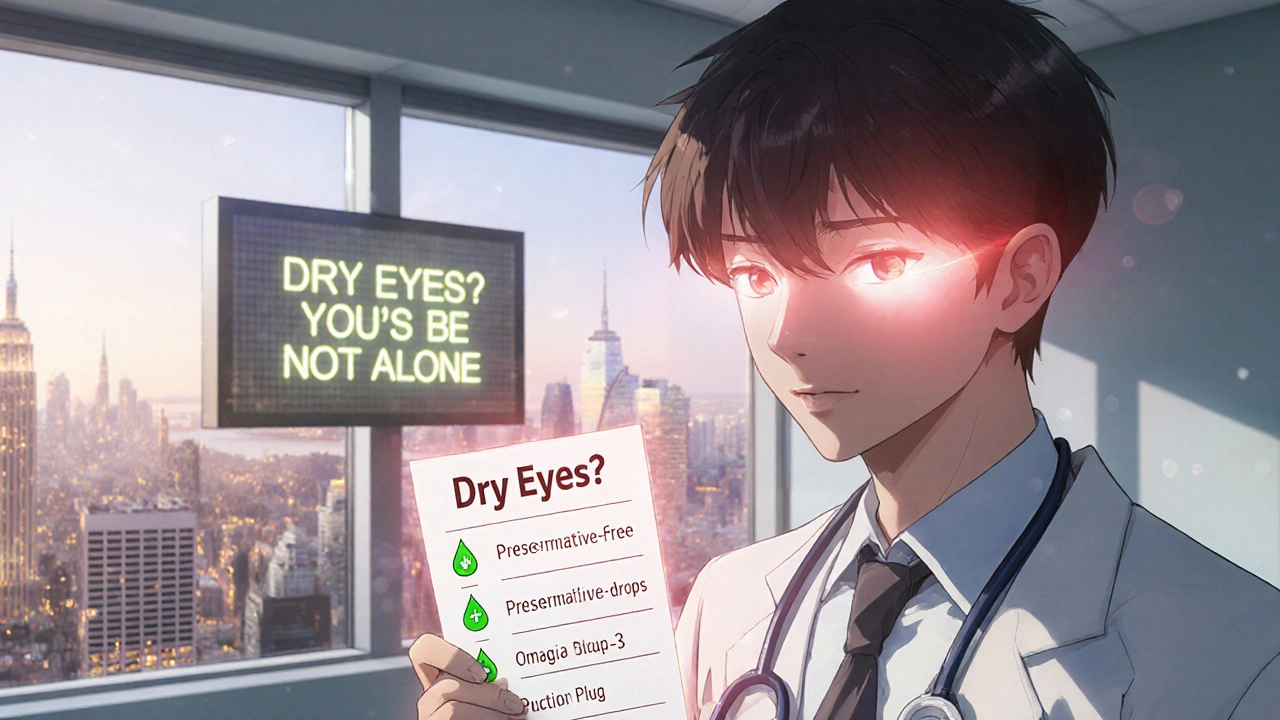
The Hard Truth: Your Doctor Needs to Be On Your Team
Too many people suffer in silence. They think dry eyes are just "part of getting older" or "side effects you have to live with." They’re not.
The best approach is a three-step plan:
- Review your meds. Bring your full list to your doctor. Ask: "Which of these could be causing dry eyes? Is there a safer alternative?"
- Use the right lubrication. Preservative-free drops, warm compresses, omega-3s.
- See an eye specialist. Not your optometrist for glasses-someone who treats dry eye daily. Ask for tear osmolarity testing or meibomian gland imaging. These tests show what’s really going on.
Dr. Vicente Diaz says it plainly: "If you’re having dry eyes from medication, changing the drug-or the dose-is often better than just adding drops."
Don’t be afraid to push back. Your eyes matter. Your comfort matters. And with the right team, you can get relief-even if you need to keep taking your meds.
What to Do Next: A Simple Action Plan
Start today. Here’s your 7-day plan:
- Day 1: Buy preservative-free artificial tears (look for "single-dose" or "preservative-free" on the label).
- Day 2: Start warm compresses twice daily. Set a phone reminder.
- Day 3: Buy an omega-3 supplement with at least 1,000 mg EPA/DHA.
- Day 4: Set a timer to follow the 20-20-20 rule every hour you’re on screens.
- Day 5: Check your environment. Move your chair away from AC or fans.
- Day 6: Write down every medication you take. Highlight any from the list above.
- Day 7: Call your doctor or eye specialist. Say: "I think my meds are causing dry eyes. Can we review them?"
You don’t need to fix everything at once. But if you do even half of this, you’ll feel better in weeks-not months.
Can dry eyes from medication be reversed?
Yes, in many cases. If the medication causing the dry eye can be stopped, switched, or lowered, symptoms often improve within weeks to months. For example, switching from BAK-containing glaucoma drops to preservative-free versions reduces dryness by over half. Even with isotretinoin, some gland function returns after stopping the drug. But if the medication is essential and can’t be changed, ongoing management with lubrication, warm compresses, and possibly punctal plugs can keep symptoms under control.
Are preservative-free eye drops worth the extra cost?
Absolutely-if you’re using drops more than 4 times a day. Preservatives like BAK cause long-term damage to the eye surface. Single-dose preservative-free drops cost more per unit, but they’re safer, more effective, and prevent further irritation. Many patients find they need fewer drops overall because their eyes heal. Insurance sometimes covers them if prescribed by a doctor.
Can I still wear contact lenses if I have medication-induced dry eye?
It’s possible, but risky. Contacts can trap irritants and dry out faster when your tear film is weak. Many people find relief by switching to daily disposable lenses or going glasses-only during treatment. If you must wear contacts, use preservative-free drops before inserting them and avoid wearing them longer than recommended. Talk to your eye doctor about lens materials designed for dry eyes.
How long does it take for dry eye treatments to work?
It varies. Preservative-free drops and warm compresses often bring relief within days to a week. Omega-3s take about 3 months to show full effect. Prescription drops like Restasis need 3-6 months of daily use to increase tear production. Punctal plugs can work in days. The key is consistency. Skipping treatments means setbacks. Stick with the plan for at least 4-6 weeks before deciding if something isn’t working.
Is dry eye from medication permanent?
Not usually, but it can become chronic if ignored. Long-term use of irritating medications-especially isotretinoin or BAK-containing eye drops-can cause lasting damage to tear glands. Early intervention is critical. The sooner you adjust your meds and start proper lubrication, the better your chances of full recovery. For those who can’t stop their meds, modern treatments like punctal plugs and anti-inflammatory drops make long-term management very effective.
Final Thought: You’re Not Alone
Millions of people are dealing with this exact problem. You’re not being dramatic. Your eyes aren’t just "tired." They’re reacting to the chemicals in your body. The good news? We know how to fix this. It’s not magic. It’s science. And it’s doable-with the right steps, the right products, and the right support from your healthcare team.
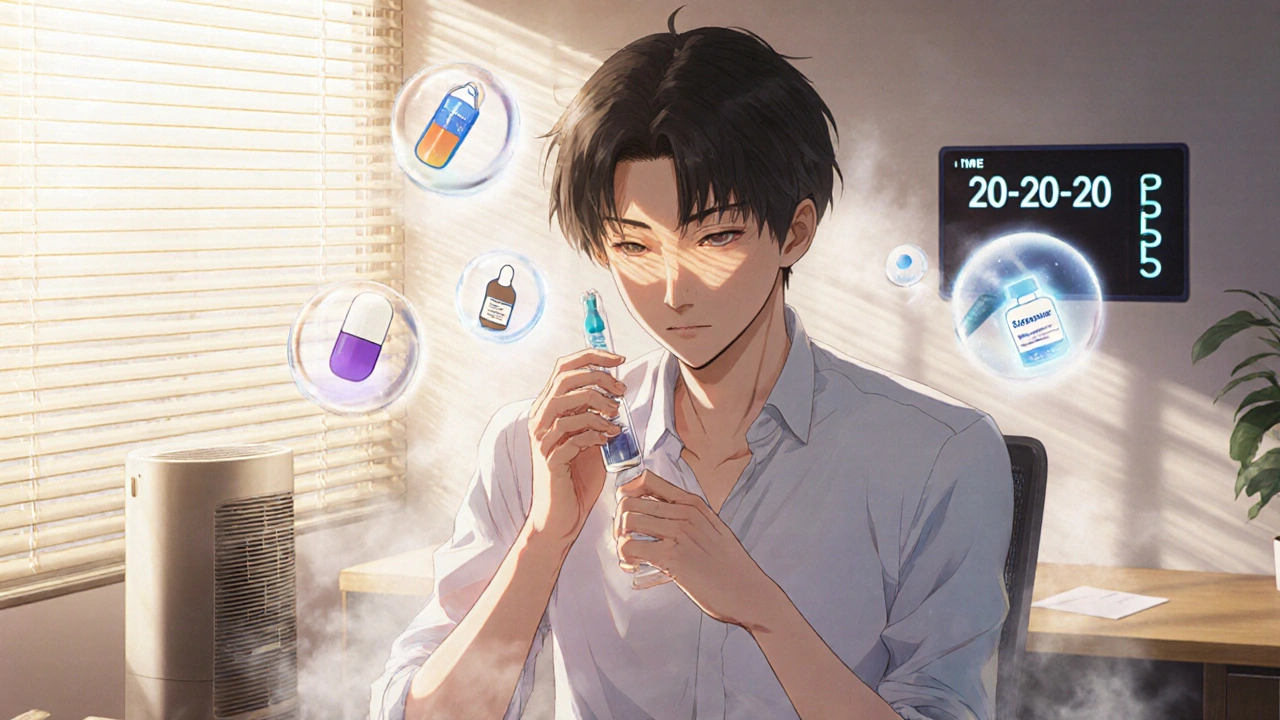
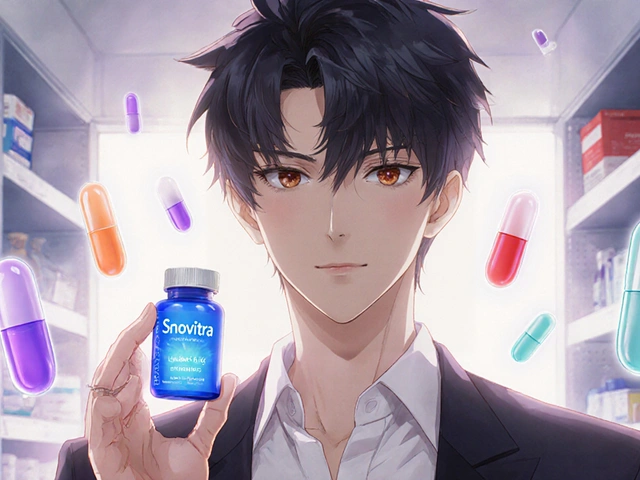
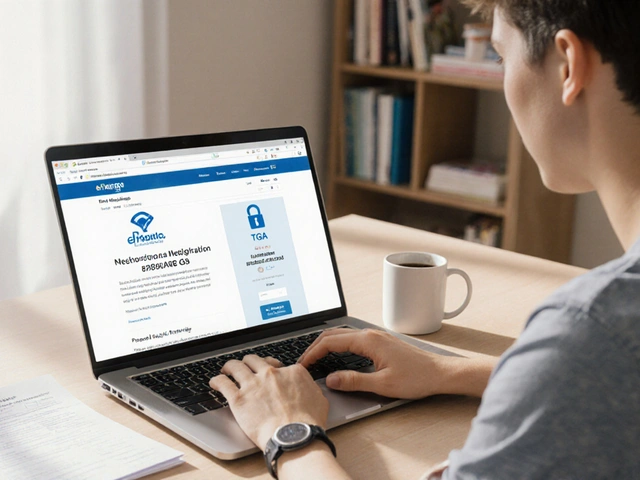

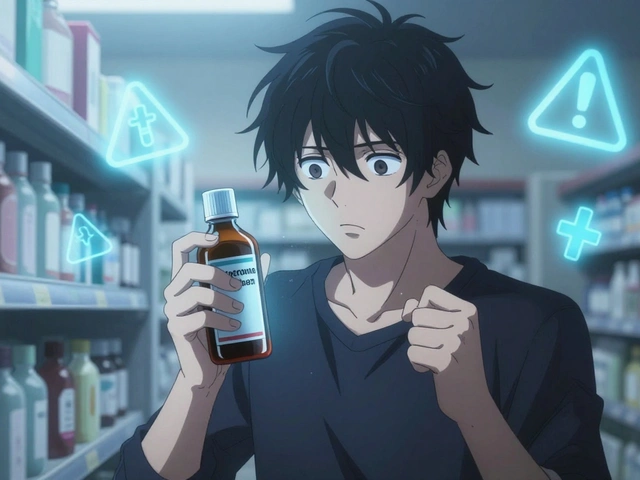
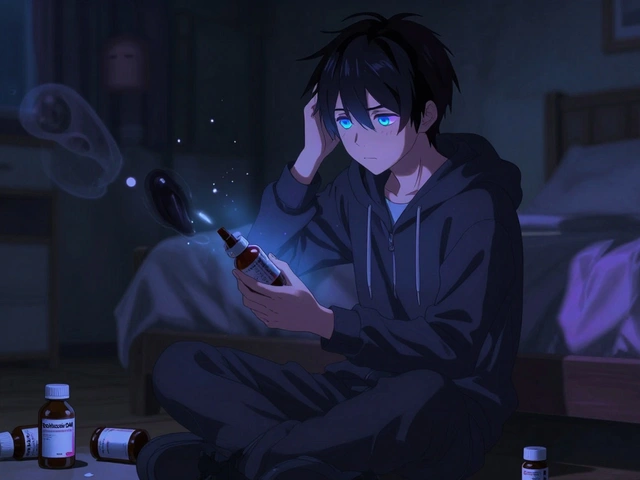
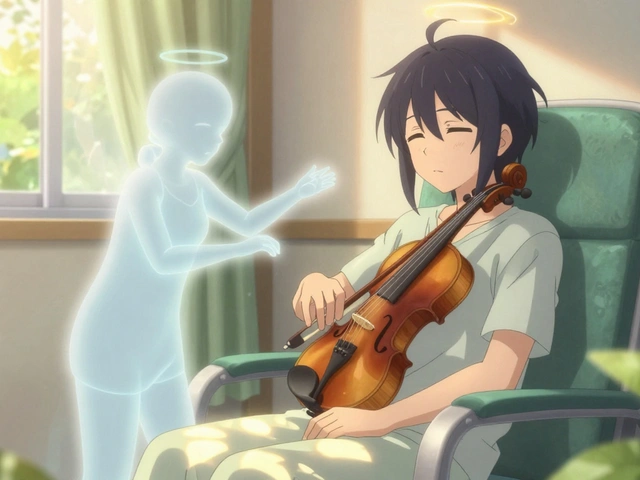
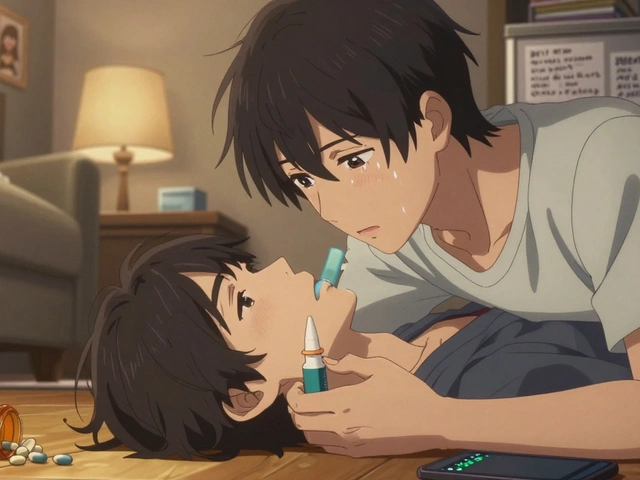
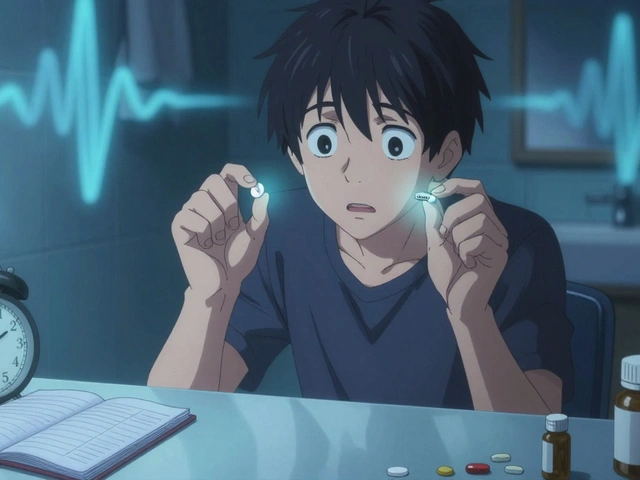
ridar aeen
I’ve been on Zoloft for 5 years and my eyes feel like I slept in a desert. I tried every drop until I switched to preservative-free single-dose ones. Game changer. No more burning after 10 minutes. Also started omega-3s-my eyes don’t feel like sandpaper anymore. Just saying.
Samuel Wood
I mean, if you’re taking antidepressants and not using preservative-free drops, you’re just asking for corneal erosion. Honestly, most people don’t even know what BAK is. It’s not rocket science. It’s biochemistry. And yet, your pharmacist gives you the cheapest stuff because insurance. Pathetic. I read the FDA monograph so you don’t have to.
chantall meyer
Warm compresses changed my life. No joke. I used to think it was just me being dramatic. Then I did it twice a day for a week. My eyelids stopped feeling like they were glued shut. Also, stop using your phone in bed. Your eyes are not a backlit billboard.
Ganesh Kamble
This whole post is just a list of things you can buy. Nobody talks about the real issue: doctors don’t care. They’ll keep prescribing the same meds while you cry into your Visine bottle. I’ve been on 7 different meds for 3 years. Dry eyes? Yeah. But my psychiatrist says ‘just use drops.’ Cool. Thanks.
Jenni Waugh
OMG I CRIED READING THIS. 😭 I thought I was going crazy. My eyes felt like I’d been sandblasted after 10 minutes of reading. I switched to preservative-free drops, started omega-3s, and now I can actually read my emails without squinting. Also, I told my doctor to stop giving me BAK drops. She didn’t even know what it was. 🤦♀️ #EyeHealthMatters
Theresa Ordonda
I’m so tired of people acting like dry eyes are just ‘a thing.’ It’s not. It’s a slow burn. Like your eyes are being microwaved from the inside. And then you get some guy on Reddit telling you to ‘just use a warm towel.’ Yeah, real helpful. I’ve tried everything. The only thing that helped? Punctal plugs. Cost me $1200 out of pocket. Worth it. Don’t let anyone tell you to ‘just live with it.’
Judy Schumacher
It’s fascinating how the pharmaceutical industry has engineered a system where the very substances meant to heal us simultaneously degrade our ocular surface integrity. The preservatives in ophthalmic solutions, particularly benzalkonium chloride, are not inert additives-they are cytotoxic agents that induce apoptosis in conjunctival epithelial cells. One must question the ethical implications of continuing to market these formulations as ‘standard of care’ while the evidence mounts against their long-term safety. I have been using Cequa for 14 months. My tear osmolarity has improved by 22%. The science is clear. The system is not.
Megan Raines
Wait, so you’re telling me I’ve been using the wrong drops for 3 years? And the warm compress thing? I thought that was just a TikTok trend. 🤔
Wayne Keller
You’re not alone. I’ve been on metoprolol and Zyrtec for years. Started the preservative-free drops and warm compresses. Didn’t fix everything, but made it bearable. My eye doc said the same thing: switch meds if you can. If you can’t, manage smart. Don’t just suffer. Do the 7-day plan. Even half of it helps.